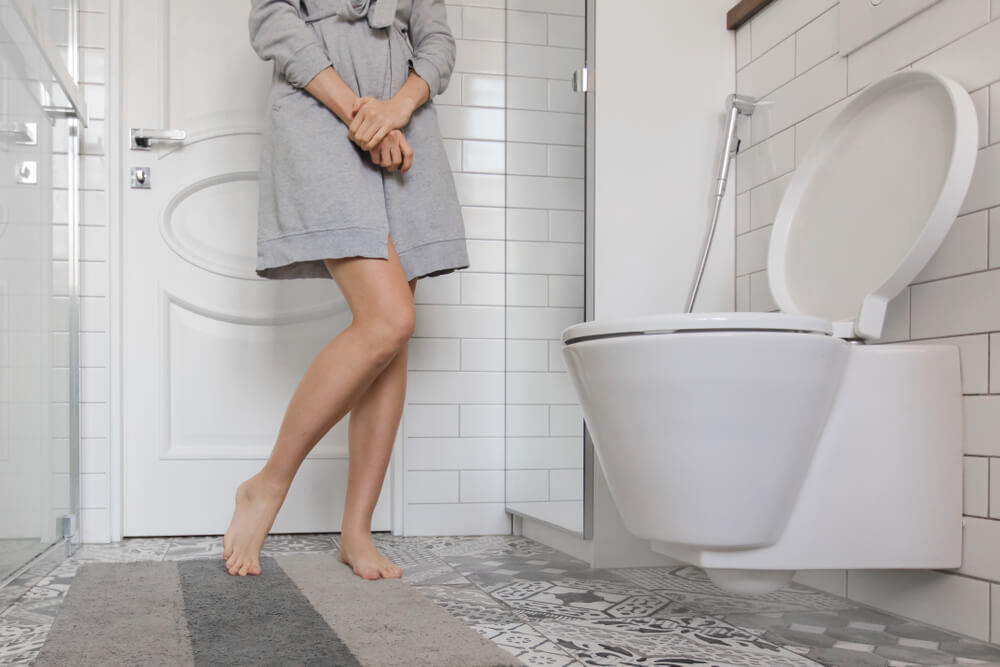Urinary incontinence can be embarrassing, but it’s actually a very common condition women and older adults experience. You might be here because one of your close family members has urinary incontinence, and you want to show support. Or, maybe you’re dealing with bladder leakage.
Whatever the case, this article will help you learn everything you need to know about urinary incontinence, the different types of incontinence, urinary incontinence treatment, and more.
Speaking of treatment, among the few examples you’ll get to read about, Morpheus8 is one of the most popular choices. First, however, you’ll want to talk to your healthcare provider for expert guidance and recommendations. By doing this, results are almost always guaranteed.
Here are the expert facts on urinary incontinence you need to be aware of. Keep on reading.
What is Urinary Incontinence?

Urinary incontinence, or “bladder leakage,” is a common condition that can cause discomfort in older adults and women who have gone through menopause or childbirth. Unfortunately, this bladder leakage is typically uncontrollable, and it can negatively impact everyday life.
What’s the deal with bladder leakage? For starters, a person’s urinary system consists of the urethra, the bladder, ureters, and the kidney, each of which has specific roles in the body (for instance, filtering, storing, and removing excess waste). The bladder acts as a “storage tank.” Hence, when it is full, the brain signals that you should urinate. After this, the sphincter (a muscle) opens up, allowing the urine to leave the bladder and flow through the urethra.
When the urinary system is healthy, patients have time to reach the bathroom before urinating. As a result, there is no bladder leakage. On the downside, people with urinary incontinence cannot control this urge, and an accident happens. Bladder leakage can occur for a variety of reasons, which you’ll find out more in the sections below.
Usually, people believe that urinary incontinence is inevitable as we grow old. Although the risk for this condition increases as we age, various effective treatments can reduce and manage the condition. Here’s some good news – urinary incontinence doesn’t have to rule your life. Instead, some treatments can help you live a normal life once again.
Types of Incontinence: Top Facts
There are four types of incontinence to be aware of. All of these types have distinct causes, triggers, and characteristics for discharge or urine leakage. Before you begin with urinary incontinence treatment, your healthcare professional will diagnose you with one of these four types of incontinence. These include:
- Stress incontinence
- Urge incontinence
- Mixed incontinence
- Overflow incontinence
Stress incontinence is one of the most prevalent types of incontinence. You may have stress incontinence when you experience discharge or urine leakage during strenuous activities (such as exercise). With this type, the patient has weak pelvic floor muscles, which cannot provide sufficient support for the pelvic organs. Thus, these patients are more likely to experience discharge or urine leakage when they move around. “Accidents” aren’t always limited to exercise and similar activities. Some people can have discharge or urine leakage when they cough, sneeze, laugh or lift objects (or any action that puts some pressure on the bladder). Usually, women who have given birth are at higher risk of stress incontinence. Men who undergo prostate surgery are at risk too.
Urge incontinence is also prevalent, and this type of incontinence happens when you feel an intense urge to urinate straight away. Typically, the “accident” happens very quickly, and the patient cannot reach the bathroom in time. One of the causes of urge incontinence is OAB or an overactive bladder. Still, nerve damage, low estrogen levels, excess body weight, and weak pelvic muscles can also lead to this condition.
Mixed incontinence happens due to a combination of several issues that result in bladder leakage. Patients with mixed incontinence may be suffering from overactive bladder and stress incontinence. One of the best ways to manage this type of incontinence is to identify the triggers.
Finally, overflow incontinence happens when the bladder doesn’t empty entirely. Patients with this type of incontinence never experience an empty bladder; thus, they are at high risk of leakage. Who is at risk? People with diabetes, stroke or multiple sclerosis (and other chronic conditions) can have overflow incontinence.
Urinary Incontinence Treatment
Your healthcare provider will inform you about the best urinary incontinence treatment for your specific needs. For instance, your doctor will have to consider the type of incontinence and your symptoms. Always be honest with your doctor, and answer all questions in detail. This way, you’ll maximize your chances for a successful treatment and speedy results.
That said, you have three options for urinary incontinence treatment. These include:
- Taking certain medications
- Making lifestyle changes
- Opting for surgical and non-surgical procedures
A few medications exist for leakage reduction. For example, your healthcare provider may recommend some of the following medicines for treatment:
- Tolterodine
- Oxybutynin
- Solifenacin
- Imipramine
- Trospium
- Mirabegron
- Fesoterodine
In some cases, you can also make excellent progress by switching up the way you live your life. For example, you can start performing pelvic floor strengthening exercises daily, improve your diet, empty your bladder regularly, opt for yoga, empty the bowels before doing physical activity, avoid lifting heavy, practice Kegel exercises, wear pads to catch leakage, and maintain a healthy body weight.
Another effective way to treat incontinence is via a surgical or non-surgical procedure.
One of the most popular non-invasive procedures for incontinence treatment is vaginal rejuvenation. This treatment is an excellent choice to address gynecologic health issues such as vaginal burning, vaginal dryness, vaginal itching, and even incontinence. Speak to your healthcare provider for more details on vaginal rejuvenation.
Other procedures that treat incontinence include:
- Neuromodulation devices (nerve stimulating pacemakers)
- Botulinum toxin injections or Botox (helps relax muscles in your body)
- Bulking agents (typically used for stress incontinence)
- Sling procedures
- Artificial urethral sphincter (great option for men dealing with stress incontinence).
Who’s at Risk?

Now that you’re aware of incontinence, here’s what can put you at risk. Remember, anyone can experience this condition. However, some groups are at higher risk than others.
Women are more likely to experience incontinence than men. Often, this is because incontinence may happen after pregnancy, childbirth, and during menopause. Each of these stages in a woman’s life can cause her pelvic floor muscles to weaken.
Also, older individuals can experience incontinence. Namely, as we naturally get older, the muscles that support the pelvic organs weaken, resulting in leakage.
You might experience temporary (short-term) or chronic (long-term incontinence). Short-term incontinence causes include: pregnancy, medications, urinary tract infections, beverages (certain drinks such as alcohol and coffee can make you urinate often), and constipation (if you have chronic constipation, you can experience bladder control problems).
On the other hand, long-term causes include: stroke, pelvic floor disorders, menopause, diabetes, enlarged prostate, multiple sclerosis, and post-prostate cancer surgery.
If you experience any symptoms of this condition, consult with your healthcare provider.
Book an Appointment Today
Talking to your healthcare provider about incontinence may feel daunting. Luckily, our team of professionals will cater to your healthcare needs with patients, kindness, and total expertise. So if you’re finally ready to diagnose and treat incontinence, give us a ring today.


